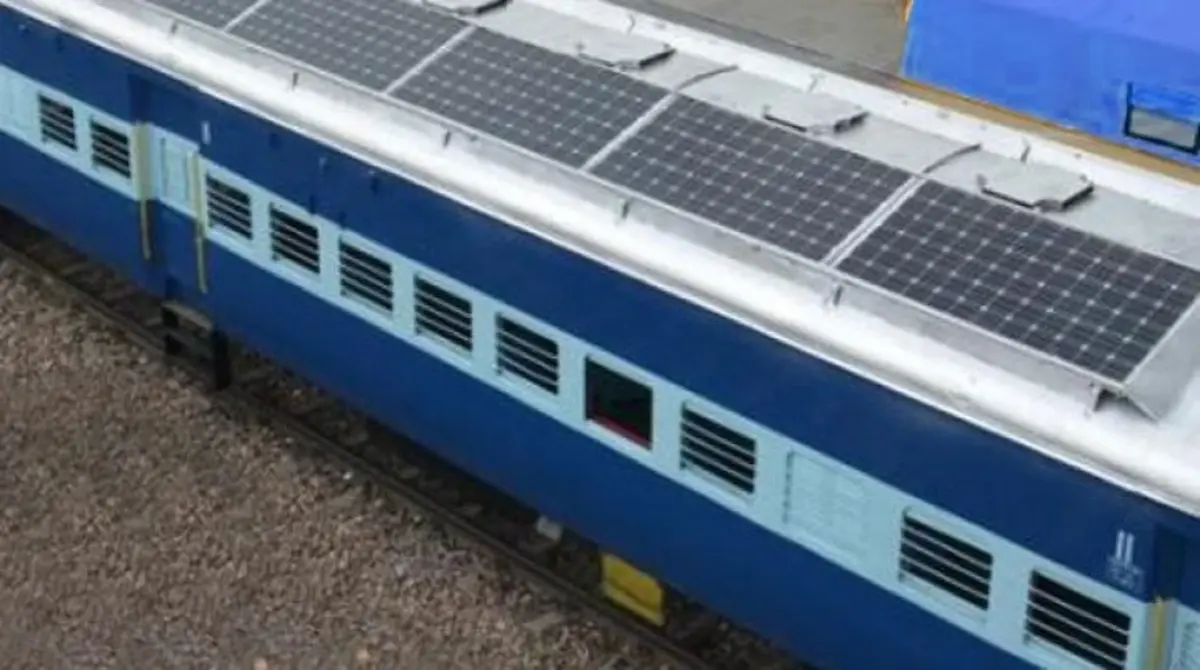Indian Railways is on a mission to achieve Net Zero carbon emissions, setting an ambitious benchmark for sustainable transportation. By prioritizing renewable energy sources such as solar and wind power, the railway network is making significant strides toward reducing its carbon footprint and improving efficiency. 🌱
⚡ The Journey to Achieving Net Zero
As per the Press Information Bureau, Indian Railways has embarked on an ambitious journey to achieve 100% electrification by the 2025-26 financial year. 📅 This monumental shift is part of the broader goal to achieve Net Zero emissions and promote environmental sustainability. 🌱
🔋 Progress in Electrification
| Target Year | Electrification Goal |
|---|---|
| 2025-26 | 100% Electrification 🚆 |
| 2030 | Net-Zero Carbon Emissions 🌍 |
The initiative not only underscores India’s commitment to combating climate change but also aligns with global efforts to transition towards cleaner energy sources. 🌞
☀️ Harnessing Renewable Energy for Sustainability
To fuel this green revolution, Indian Railways has secured significant renewable energy capacity:
| ⚡ Energy Source | Installed Capacity (MW) |
| ☀️ Solar Power | 4,260 |
| 💨 Wind Energy | 3,427 |
A recent milestone in this journey is the signing of a 170 MW Power Purchase Agreement (PPA) with the Madhya Pradesh government. This agreement marks the procurement of India’s cheapest solar power at ₹2.15/kWh, a testament to the cost-efficiency and scalability of renewable energy solutions. 📉
🤝 Collaboration and Innovation in Renewable Energy
The success of Indian Railways’ Net Zero initiative is bolstered by collaborative efforts with state governments. The Minister of Railways has urged all Indian states to contribute renewable energy, fostering a collective approach to sustainable energy procurement. 🌍
🔆 Key Partnership: Rewa Ultra Mega Solar Power Limited (RUMSL)
✅ Operating under DBFOO model
✅ Developed large-scale solar parks
✅ Achieved lowest-ever solar PPP tariff in India
✅ Showcasing successful public-private partnerships in renewable energy 🌞
🚆 Infrastructure Development for a Greener Future
Madhya Pradesh has witnessed a record budget allocation of ₹14,745 crore for railway infrastructure development in FY 2025-26. 📈 This investment has accelerated infrastructure projects, with railway track laying increasing drastically:
| 📅 Time Period | 🚆 Track Laying (km/year) |
| Before 2014 | 29 |
| Present | 230 |
🚄 This rapid development is crucial for supporting the increased demand for renewable energy and facilitating the shift towards a greener transportation network. 🌱
🔮 Future Energy Requirements for Indian Railways
Looking ahead, Indian Railways’ traction power requirement is projected to reach 10,000 MW by 2030. 📊 To meet this demand sustainably, the focus remains on expanding renewable energy procurement.
| Year | 🔌 Projected Power Requirement (MW) |
| 2025 | 7,000 |
| 2030 | 10,000 |
By securing solar and wind energy through PPAs and setting up its own solar systems, Indian Railways is committed to reducing dependence on fossil fuels and lowering overall logistics costs. 💰✅
🌏 Environmental Benefits of Net Zero Transition
| 🌱 Benefit | 📊 Impact |
| 🌍 Carbon Emission Reduction | Significant decrease in CO2 emissions |
| 🔋 Energy Cost Savings | Lower power procurement costs |
| 🌞 Increased Renewable Share | Dependence on fossil fuels minimized |
| 🚆 Sustainable Transportation | More eco-friendly railway operations |
🌎 The Road Ahead: A Sustainable Tomorrow
Indian Railways’ commitment to achieving Net Zero carbon emissions and adopting renewable energy sources is a testament to India’s dedication to a sustainable future. 🌏 As the organization continues to innovate and collaborate, it sets a global example for integrating green initiatives into large-scale transportation networks. 🚆🌿
📢 Join the Conversation!
What are your thoughts on Indian Railways’ sustainability initiatives? Drop a comment below and share your views! 💬👇
📌 Stay tuned for more updates on Indian Railways’ journey towards a greener tomorrow! 🌱🚆

